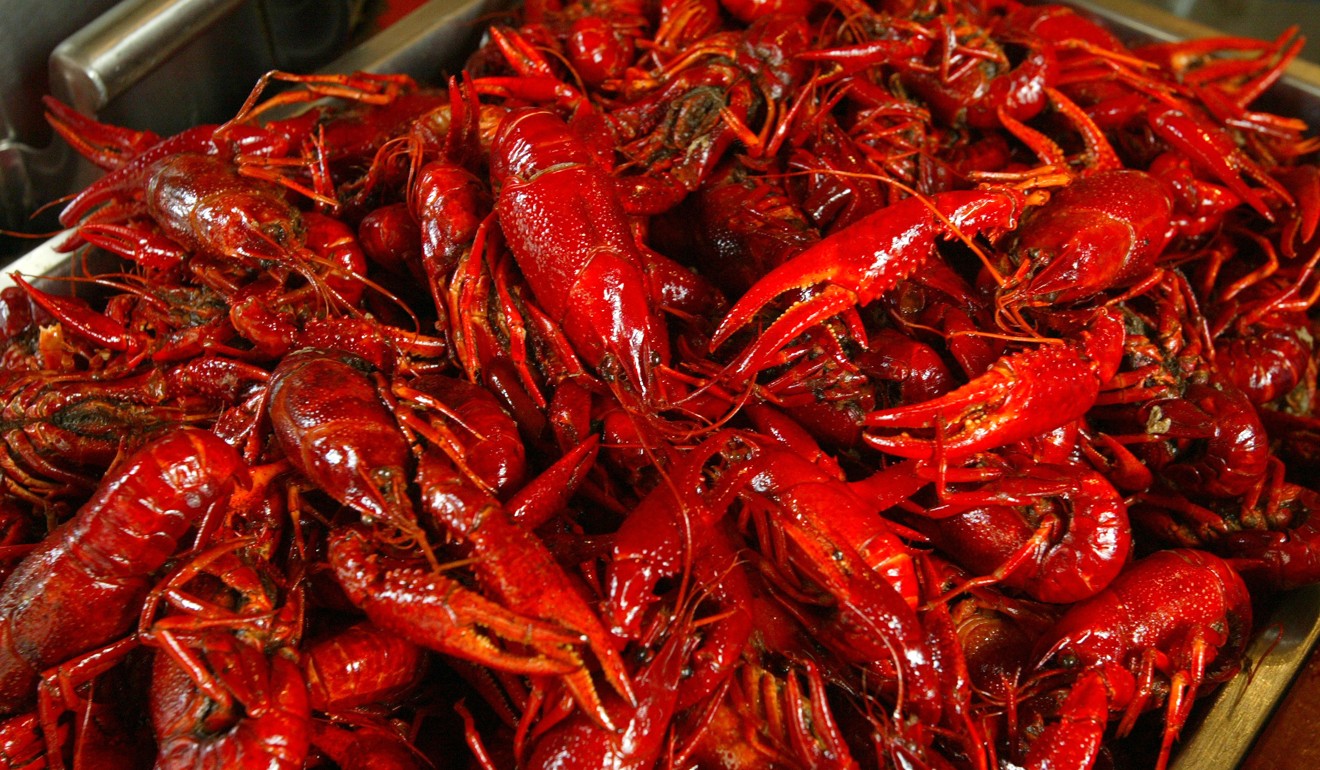
China’s craving for crayfish creates US$2 billion business
Previously a rice farmer’s worst enemy, five million people are now employed producing, cooking and serving hundreds of thousands of tonnes of the crawly burrowers each year
China’s prodigious appetite for crayfish has created a multibillion dollar business in China, large enough to provide a living for five million people.
Originally imported by Japanese traders to China’s Nanjing as feed for bullfrogs in the 1920s, but tracing their roots back to the southern states of the US such as Louisiana, crayfish used to be an insurmountable foe to local rice farmers after their terraced fields were razed by the crawly burrowers making it impossible to grow crops.
The crustacean invaders are now wreaking the same kind of havoc across ecosystems in Africa, but in China they went from “most hated” to “most sought-after” during the 1990s, not long after the country started simmering them with abundant spices and turning them into a culinary delicacy.
That is twice the weight of the gigantic pool built to hold the swimming competition of the 2008 Beijing Olympics, and a 32 per cent jump from a year earlier, according to the latest study by China’s Ministry of Agriculture, making the country the world’s biggest producer and exporter.
“The group of young crayfish adherents in China is still growing, and they are bound to fuel an explosive growth of the current 14.66 billion yuan (US$2.15 billion) industry in years to come,” said the ministry’s report.
The Chinese call the bright red crustaceans “little lobsters” – seemingly a more affordable substitute for their expensive cousins – and fill their plates with the creatures absorbed with a combo of Chinese pepper and chillies.

One version had it that crayfish was a type of worm that bred in polluted water and fed on garbage, while another peculiar conspiracy theory said it was a genetically modified species used by the Japanese army to dispose of corpses in the Sino-Japanese war in the 1940s.
Whatever the tale, they have failed to deter Chinese millennials from savouring bucket-loads of them during summer night-outs, ideally washed down with a bottle of Tsingtao beer.
Chopsticks are pointless. Foodies typically just put on disposable gloves and use their fingers to twist off the head, peel off the shell and suck out the juicy roe mixed with spices and other heavy seasoning.
“Crayfish night-outs are becoming more of a social tool among Chinese millenials,” said Zhu Danpeng, an analyst with China Branding Institute. “They get to chat with each other in a casual setting when having the messy feast.”
Farmers in areas along the Yangtze River churned out roughly 850,000 tonnes of the creatures last year, and 17,670 eateries have sprung up across the nation dedicated to serving crayfish dishes, the agriculture ministry study showed.
Crayfish night-outs are becoming more of a social tool among Chinese millenials
The nightmare for rice farmers has now become the rice bowl for as many as five million Chinese farmers, cooks, waiters and restaurateurs, as well as a boost to the GDP of many smaller Chinese cities and counties, according to estimates by the ministry.
With crayfish farms, crayfish cooking academies, and crayfish festivals, the city is now dubbed “the hometown of crayfish”, despite the fact that the species is a far cry from their US Cajun roots.

There have been a barrage of incidents reported by the Chinese media, where Chinese foodies, including one Hong Kong woman, were hospitalised with symptoms of unbearable muscle pains after eating crayfish contaminated with toxic chemicals.
The common diagnosis is rhabdomyolysis, the breakdown of muscle tissues which can cause kidney failure or death in severe cases.

